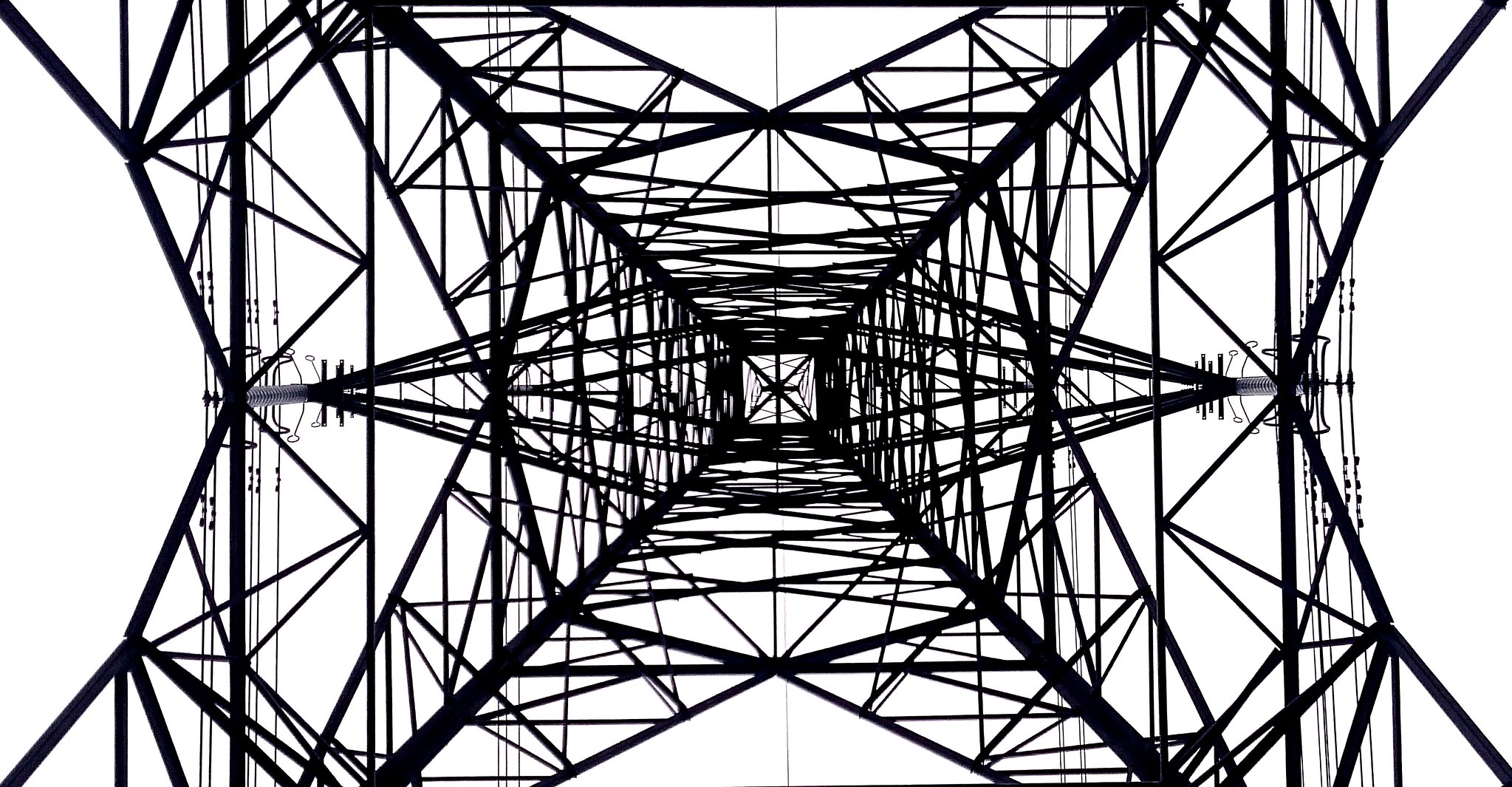National Security Implications of Deferred Maintenance in Infrastructure
Most deferred maintenance issues in infrastructure translate only into local health and economic problems, but there are serious national security ramifications associated with decaying infrastructure.

Published by The Lawfare Institute
in Cooperation With

Rome wasn’t built in a day, but pieces of infrastructure at the heart of the Roman empire have survived for more than 2,000 years. Though Roman roads were (and are) incredibly resilient, even most ancient structures require periodic maintenance to remain functional.
Deferred maintenance of critical infrastructure is a local, state and federal challenge that is a global phenomenon. According to a 2019 report release by the Volcker Alliance, a nonpartisan think tank, deferred maintenance in the United States could already exceed an estimated $1 trillion, or 5 percent of the U.S. gross domestic product. The National Park Service alone accounts for more than $11 billion of deferred maintenance.
What makes deferred maintenance so costly? In infrastructure, utilities, buildings and other systems, deferred maintenance consists of structural repairs and necessary upgrades that are postponed—usually for budgetary reasons—until the next year. The monetary costs associated with deferred maintenance continue to grow until maintenance is done. In some cases, the cost of deferral reaches a point where the level of funding required is identical to that required to build a completely new structure. At this point, the condition of the structure itself will be calculated as naught. Besides the devaluation of the structures, deferred maintenance presents an omnipresent problem manifested in cracked pavement, collapsing bridges, gas leaks, failing levees and a multitude of other effects. Preplanned maintenance costs and associated disruptions typically cost less than implementing reactive or emergency repairs, even without taking into account all the risks involved with the latter.
News analysis on deferred maintenance is mostly viewed through the prisms of budgets, taxes, structures and logistics, but the national security implications of decaying infrastructure are easily overlooked. While there are different levels and varied interpretations of what constitutes a national security concern, the simplest definition includes the protection of the country and its citizens from threats both domestic and foreign. Most deferred maintenance issues in infrastructure translate only into local health and economic problems, but there are serious national security ramifications associated with deferred maintenance. The Volcker Alliance’s 2019 report mentions national security only as a facet of one of the eight criteria it used to evaluate the state of the U.S. infrastructure. The criteria of “resilience” is defined in the report as an “[i]nfrastructure system’s capability to prevent or protect against significant multihazard threats and incidents, and ability to quickly recover and reconstitute critical services with minimum consequences for public safety and health, the economy, and national security.” In light of this characterization, this post will review key infrastructure categories and their potential for presenting national security challenges.
Dams and Levees
There are more than 91,000 dams and 7,800 levee systems in the United States. While the Army Corps of Engineers (USACE) plays a key role in critical systems at the federal level, these structures exist throughout the country with oversight and safety inspection regulations varying from state to state. About one-third of dams serve purposes from flood control and hydroelectric energy production to key features of water sources. Levees, by contrast, act as flood risk control measures for communities, infrastructure, businesses and the environment. The American Society of Civil Engineers (ASCE) characterized roughly 15,000 dams as having “high-hazard potential” in its 2017 Infrastructure Report Card. The situation with levees is more complex, since so much is simply unknown. The USACE has done risk assessment on 1,200 levee systems under their supervision and found 5 percent to be at high to very high risk and 15 percent to be at moderate risk. The problem is that the National Levee Database counts only 25,771 miles of levees, while the ASCE report estimates that the United States’s total mileage in levees is anywhere between 30,000 and 100,000 miles.
Alabama’s extreme negligence in dam maintenance is a stunning example of dangerously unregulated and crippling infrastructure. As the only U.S. state without a dam safety program, Alabama regulates only three out of its 2,273 dams, according to the National Inventory of Dams. The 2015 Alabama Infrastructure Report Card states that the “size of the population downstream of these dams continues to increase, placing more people and property at a greater risk. Only about 1 in 5 of identified high hazard potential dams receives inspections.” (No new data is available since 2015.) The last attempt to create a dam safety program in Alabama failed in 2014 in the face of opposition from farming and forestry lobbyists—as of 2017, the problem remains. In the case of levees, Hurricane Katrina’s devastating impact on New Orleans presented a worst-case scenario of the destruction that can occur when levees fail.
Roads, Rail and Bridges
In the U.S., state and local governments are responsible for most of the country’s 4 million miles of roads. Privately owned railroads are responsible for roughly 140,000 miles of track—including the vast majority of portions used by Amtrak for passenger traffic. And the country’s 614,000 bridges are under mostly federal, state, local or private ownership. Roughly one-sixth of all bridges are within the purview of private freight companies.
According to the ASCE’s most recent Infrastructure Report Card, roughly 21 percent of all highway pavement was found to be in poor condition with a significant accumulation of deferred maintenance. The freight rail network has seen sustained investment toward maintenance and upgrades, but passenger rail suffers from aging infrastructure—particularly in the Northeast Corridor. In June 2020, the Federal Railroad Administration gave Amtrak two $63 million grants toward the funding of the Northeast Corridor rehabilitation project. Roughly 9.1 percent of bridges are viewed as structurally deficient with unmet maintenance and repair needs, and 13.6 percent are functionally obsolete, frequently creating chokepoints and congestion. Damaged highways and roads lead to accidents, lost time, congestion, and increased wear and tear. Bridge collapses can cause disruptions that are much more likely to result in local and statewide effects.
Drinking Water, Wastewater and Stormwater
The United States’s management of drinking water, wastewater and stormwater presents significant national security challenges. The vast sector of water maintenance includes 1 million miles of drinking water pipelines, 1.3 million miles of public and private sewers, and 14,748 wastewater treatment plants. The quality of drinking water in the U.S. is mostly high, but there are persistent local issues with legacy and emerging contaminants. The majority of both drinking water and wastewater pipelines were laid early to mid‐20th century. Since the life span of these pipelines ranges from 75 to 100 years, many pipelines will reach the end of their life spans in the coming decades. Some 1,600 communities across the U.S. have stormwater utilities, and 700 of those communities combine both systems. Deferred maintenance of conveyance and treatment systems has resulted in increased structural failures, overflows, blockades and health risks—especially in systems that handle both wastewater and stormwater. Besides the substantial health risks of contaminated drinking water, inadequate stormwater systems can severely exacerbate damage to infrastructure during flooding.
When President Obama declared a national state of emergency over toxic drinking water in Flint, Michigan, it became clear that the status of water infrastructure can become a national security vulnerability.
APM Reports’s May 2020 story, “Buried Lead: How the EPA Has Left Americans Exposed to Lead in Drinking Water,” details the effects of old pipes. In 1991, the Environmental Protection Agency (EPA) banned the use of lead and copper in drinking water pipes due to the highly dangerous effects of lead on humans and especially children. At that time, it was decided that instead of replacing all the pipes—roughly 10.2 million miles of lead service lines built out of toxic materials—the EPA would monitor and limit contamination. However, APM Reports discovered glaring deficiencies; and their investigation found that the EPA should set its limits 70 percent lower than the current levels to prevent poisoning. According to APM Reports, the EPA has known about this issue since 2011, but instead of taking decisive action, the matter was referred to an advisory board with heavy representation from water utilities. Testing done outside the EPA has found its standard testing procedures woefully inefficient.
Since the 2011 discovery, a group within the EPA has been trying to update the outdated Lead and Copper Rule of 1991 under intense political pressure. It does not help that the original standards were derived from the capacity of utility companies, rather than the safety of U.S. citizens. When the Flint water crisis occurred, lead levels reached as high as 13,200 parts per billion, compared to the EPA’s action level, which is set at 15 parts per billion. Yet for months during the crisis, 90 percent of sampling sites showed results below this level, indicating that Flint was in compliance with the guidelines. The pipes have since been replaced and the water declared safe, but the crisis precipitated a breakdown of trust that will be much more difficult to fix then old infrastructure.
Problems concerning old pipelines are not limited to Flint, and their risks may affect as many as 15 to 22 million U.S. households. Replacing all the lead pipes in the United States would cost between $30 and $44 billion in total.
Energy
The energy infrastructure in the United States also faces similar problems. Several of the country’s power generation facilities and 7 million miles of transmission and distribution networks were constructed in the 1950s and 1960s. They are currently operated by 7,000 privately and publicly owned utilities. Oil and gas is delivered via 2.6 million miles of pipelines mostly owned by private utilities and municipalities. Due to increased demand and insufficient investment, electricity infrastructure is often operating close to peak capacity, making maintenance and upgrade tasks challenging, while providing an insufficient buffer to deal with extreme weather conditions. Oil and gas infrastructure has fared somewhat better, but the concentration of processing plants on the coasts of southern states adds some risk—namely their exposure to extreme climate events such as hurricanes. Due to technological advancement, society’s dependence on energy infrastructure is highly vulnerable to cyber threats.
Pervasive overhead electric distribution systems also pose unique challenges. For example, large power lines are susceptible to disruptions from extreme weather phenomena. In two examples from August, Tropical Storm Isaias left more than 3 million people and businesses without power, and Hurricane Laura left more than 400,000 people without power. Thankfully, utility companies have begun to notice that the benefits of underground distribution outweigh the perceived lower costs of overhead electricity.
Airports
There are 3,345 airports in the U.S., servicing roughly 8.7 million flights a year and more than 2 million passengers daily. Their infrastructure falls under the regulation of the Federal Aviation Administration (FAA). Air cargo represents roughly one-quarter and one-fifth of U.S. exports and imports, respectively. While runways and airport facilities are generally in good condition, most challenges to air travel and shipping are due to a lack of investment in new technologies. Increased traffic at airports has underscored the need to overhaul air traffic control systems. The coronavirus pandemic has inadvertently assisted with coping with the latter. Aware of the challenge, the FAA has been working on a comprehensive overhaul of the National Airspace System since 2009 with its Next Generation Air Traffic Control System (NextGen) to keep up with increasing demand. In the context of national security, infrastructure seems to be the least of several challenges present; vulnerabilities in airport cybersecurity, in contrast, are a global and glaring deficiency. A recent report by ImmuniWeb, an application security company based in Switzerland, discovered security risks in 97 of the world’s 100 largest airports.
Ports and Waterways
The United States has 926 ports, which serve as vital logistics and trade conduits that make up almost one-third of the U.S. economy. The U.S. Army Corps of Engineers oversees 25,000 miles of inland waterways and 239 locks that are an important part of this system. Despite their national significance, most funding for the ports comes from the states. Maintaining ports requires both essential repairs as well as modernization of equipment, structures and dredging in order to ensure that ships can dock and be serviced efficiently. Logistic landside connections to these ports must be attended to as well. According to the 2017 ASCE report, U.S. ports are in relatively good condition, and their facilities require a sustained increase in resources to meet the challenges of increased volumes of cargo traffic. Cargo is transported through increasingly large shipping containers. Waterways are also in dire need of investment as most structures are beyond their service life and are continuously deteriorating. Due to their nature, ports are uniquely susceptible to natural disasters and terrorist attacks, since large disruptions in traffic can cause excessive damage to the economy, as is evident from the explosion in Beirut’s port this summer.
As another example, on Aug. 12, 2015, twin explosions rocked the port of Tianjin, the largest port in northern China. The explosions killed 173 people. In addition, more than 12,000 vehicles and 7,000 containers in the port were damaged or destroyed, and property was damaged more than half a mile from the site. Despite the damage, explosions took place at a logistics hub away from the port installations themselves, sparing most infrastructure. According to PortEconomic’s report “Anatomy of a Port Disaster: The Tianjin Port Explosions,” improper handling of cargo, lack of knowledge of the nature and amounts of hazardous materials being transported, and incompatible land use in and around the port seemed to have contributed to the magnitude of the disaster.
The security measures undertaken in U.S. ports to ward off potential terrorist threats have resulted in improvements since the Safe Port Act of 2006, but cybersecurity is still a potential vulnerability. These concerns are especially prevalent since so many port systems are dependent on cyber infrastructure for tasks such as logistics and navigation. Port authorities and infrastructure providers have recognized these concerns and have started to share cybersecurity information via the Maritime Transportation System Information Sharing and Analysis Center (MTS-ISAC).
National Security Concerns
There are two identifiable national security threats with directs links to infrastructure and deferred maintenance:
- Cybersecurity. Energy infrastructure presents a unique vulnerability. In that space, a fractured field of energy operators and the sheer number of power plants and distribution networks create a rich target environment for economic and security disruption. Additionally, the electric-power and gas sector’s interdependencies and physical and cyber infrastructure create an additional level of vulnerability, despite the Cybersecurity and Infrastructure Security Agency’s continuing efforts to keep critical infrastructure safe.
- The cumulative effect of deferred maintenance and climate change. Extreme weather phenomena are already increasing in frequency and intensity. The recent destructive hurricanes and wildfires, such as those in California, are just the tip of the spear. As these effects continue to multiply, all infrastructure will be subjected to more pressure. Existing structural deficiencies will create additional vulnerabilities and a possible cascade effect that could endanger multiple sectors of society and security infrastructure simultaneously.
The scope of the infrastructure problem remains a mystery to much of the American public. Localities, state governments and even the federal government simply do not have any centralized catalog of the entirety of the country’s infrastructure. The unknown status of more than 2,000 dams in Alabama is just one example of a larger problem. Weather phenomena have produced ample evidence of the dangers of climate change to infrastructure, just like the coronavirus pandemic has laid bare deficiencies in U.S. broadband infrastructure. The incoming Biden administration has identified the threat posed by climate change. Pete Buttigieg, President-elect Biden’s nominee for secretary of transportation, offers some hope for the prioritization of infrastructure as he campaigned on a $1 trillion infrastructure proposal. States and localities are doing good work, but these challenges are not taken seriously enough by the broader American public. As the United States distributes the coronavirus vaccine or braces for the next hurricane, the only danger won’t just be a storm or a pandemic but will also be hidden beneath the cracks in the concrete.





